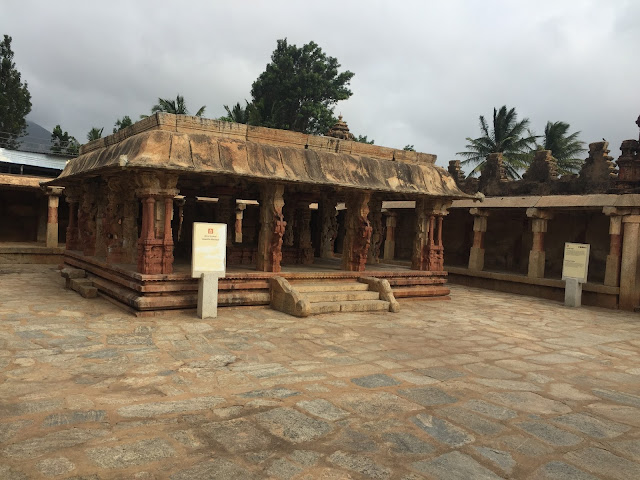1000 years old Bhoganandeeshwara temple dedicated to Shiva and Parvati is a marvel of sorts, a testament to the intricate Dravidian architecture. The temple contains essential elements of a typical Dravidian temple which include the sanctum or ‘vimana’,the ‘mantapa’ or hall, the towers or ‘gopuras’ and a 'kalyani' or temple tank.
Copper plates found at Chikkaballapur state that the temple was built by Ratnavali consort of Bana King Vidhyadhara and records a grant to it in 810 AD. The temple then underwent many additions and modifications, spread over the rule of around five dynasties. The Chola kings in the 11th century added the roof; the Hoysalas added the marriage hall to the temple structure and the outer wall and buildings were added by the Vijayanagar kings in the 13th century.
For centuries it was impregnable until the British stormed it in October 1791 and defeated Tipu Sultan.
For centuries it was impregnable until the British stormed it in October 1791 and defeated Tipu Sultan.
Bhoganandeeshwara temple complex houses three temples, Arunachaleshwara, Uma Maheshwara and Bhoganandeeshwara.
Vijayanagara rulers added the Kalyana Mantapa and Tulabhara Mantapa.
Shringi Theertha or the temple pond is surrounded on all four sides by a walkway and a running mantapa. It has steps leading down to it on all four sides. As per a popular legend, the divine bull Nandi plunged his horn into the ground to draw out water from the divine Ganga and created the pond. The pond is said to be the source of South Pinakini (South Pennar) River.
Amazing View
Those familiar with Nandi Hills know that we turn left to climb up towards the hill. To reach this place, go right instead. Follow the scenic road till you reach the temple ( dont worry, there are boards ). Park in front of the whitewashed outer compound. Tripods are not allowed inside the temple. You can leave it in the temple office if you happen to have brought it in with you.





















